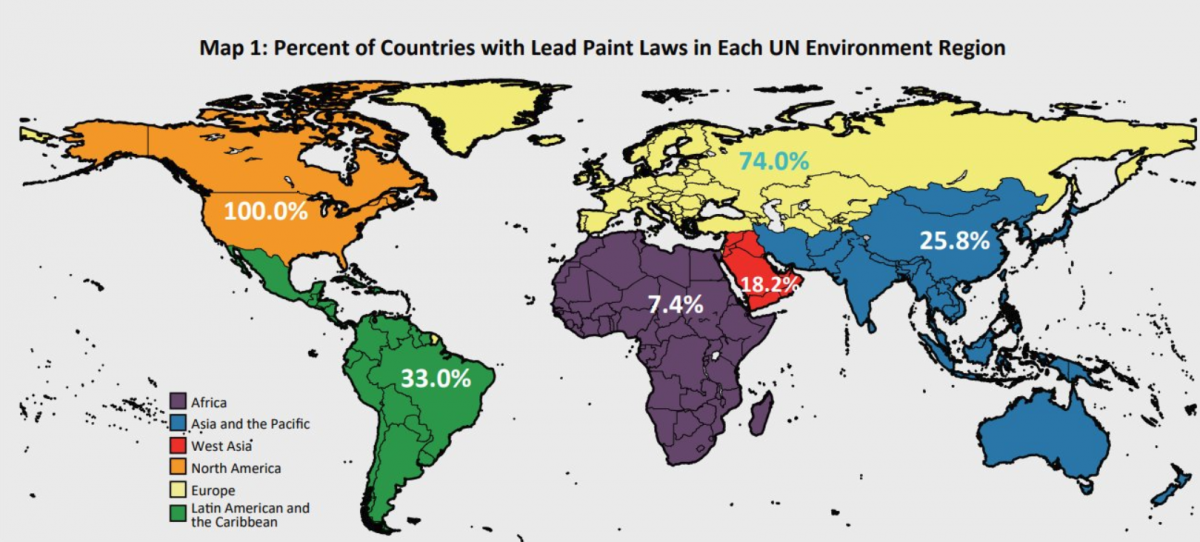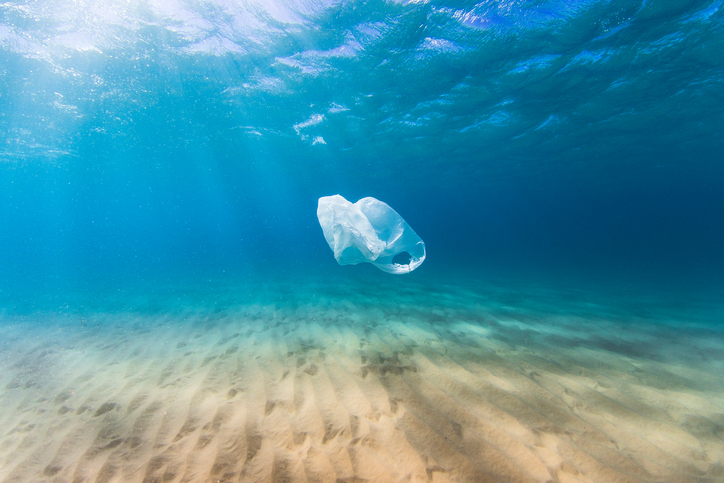New Year’s Resolutions: Is a pollution-free planet possible to achieve?
Is UNEA’s high ambition of a pollution-free planet unrealistic? Christian Ledwell explores opportunities for countries to have a significant impact through regulatory action that focuses on three specific pollutants.
At a time of year when many mull over ambitious New Year’s resolutions, Ministers of the Environment met at the third UN Environment Assembly (UNEA 3) to negotiate resolutions to tackle a global problem that, according to recent estimates in The Lancet, kills 9 million people annually: pollution.
But in the plenary hall there was a more immediate, if more inconsequential, problem: the Internet wasn’t working.
Although Internet connectivity at the UN Complex in Nairobi is excellent, heavy demand slowed it to a crawl. The problem was that too many people were using it simultaneously, often connecting via multiple devices.
Slow internet is, of course, a small problem in the grander scheme—but at a conference on one of the most serious global problems, this very minor issue was illustrative of the larger challenge at hand. How do you reduce overconsumption of limited resources, especially when so many of us are complicit in that overconsumption to some degree? What’s the incentive for taking an individual altruistic action to use less? (Full disclosure: in characteristic North American fashion, I was consuming more than my fair share of Internet connectivity during the meeting, connected as I was via two devices).
Though the UNEA’s high ambition of a pollution-free planet may seem quixotic at a glance, I found that the opportunities for countries to have significant impact through focused regulatory action seem eminently achievable when the spotlight is cast on specific pollutants.
The UN describes UNEA as the world’s “highest-level decision-making body on the environment.” The meeting sought to have governments agree on resolutions to curb all forms of pollution, resulting in 13 non-binding resolutions and a ministerial declaration on pollution of air, land and soil, fresh water and oceans.
In setting the meeting’s context, UN Environment’s Executive Director Erik Solheim pointed to one of the happiest moments in international environmental diplomacy—the Montreal Protocol to protect the ozone layer—as a model for an agreement on pollution. He emphasized that the Montreal Protocol was achieved through the combined efforts of multiple actors: civil society activism, supportive governments and businesses at the table cooperating in the phase-out of ozone-depleting substances.
But while a harmonious relationship between civil society, governments and businesses is a laudable ideal, negotiating this in reality remains far from easy. As numerous civil society groups emphasized during UNEA 3, the starkest metric of the work yet to be done is the number of extrajudicial killings of activists. The Guardian and Global Witness estimate that 185 environmental defenders have been killed in 2017 (as of December 19, 2017) while protecting their community’s land or natural resources.
Though the UNEA’s high ambition of a pollution-free planet may seem quixotic at a glance, I found that the opportunities for countries to have significant impact through focused regulatory action seem eminently achievable when the spotlight is cast on specific pollutants.
Banning Lead Paint
Lead is a pervasive and toxic pollutant that, UN Environment writes, causes “permanent brain and nervous system damage, problems with kidney function, and blood and reproductive damage.” Exposure to lead can cause “sensory, motor, cognitive and behavioral impacts, including learning disabilities; attention deficits; disorders in a child’s coordination, visual, spatial and language skills, and anemia.”
To put a fine point on it, New York University’s Dr. Leonardo Trasande told attendees at a side event: “No amount of lead exposure is safe.”
While lead in all kinds of consumer goods can be harmful, its persistence as an additive in paint is an area that is especially ripe for regulation, as only 34.7 per cent of countries have legally binding controls to limit the production, import and sale of lead paints.
In Canada, where the use of lead paint is regulated, producing lead paint for export is not adequately regulated.

The World Health Organization, United States Environmental Protection Agency and other partners have developed a model law regulating lead paint that countries can adapt to their national context, and a which number of countries are exploring
Encouragingly, one of the draft resolutions to emerge from UNEA 3 was on “Eliminating Exposure to Lead Paint and Promoting Environmentally Sound Management of Waste Lead-Acid Batteries.”
Single-Use Plastics
Each year, human activity leads to 8 million tonnes of plastic in the oceans, resulting in environmental calamities like the Great Pacific garbage patch, the Texas-sized mess of plastic fragments swirling around an ocean vortex and contaminating the food chain. By one estimate, there will actually be more plastics than fish in the ocean by 2050. Even though that report, from the Ellen MacArthur Foundation and World Economic Forum, has raised questions about how to measure the plastics and how to count the fish, there is clearly room to do better.
Forty countries have now committed to UN Environment’s Cleanseas campaign, and during UNEA 3, Sri Lanka promised to implement a ban on single-use plastic products beginning in January 2018.

Short-Lived Climate Pollutants
Air pollution remains the most significant impact on health internationally and is a form of pollution that is all the more difficult to control given that it travels easily across borders (issues of transboundary regulation were hotly debated during the UNEA negotiations).
Canada sponsored a resolution on short-lived climate pollutants including black carbon, methane, ground-level ozone and hydrofluorocarbons. Reducing these pollutants not only has immediate benefits for health but will also contribute to countries’ efforts to fulfill their Paris Agreement commitments.
"With the promises made here, we are sending a powerful message that we will listen to the science [and] change the way we consume and produce.”
Dr. Edgar Gutiérrez-Espeleta, Minister of Environment and Energy of Costa Rica and President of the 2017 UNEA
This language that short-lived climate pollutants “are responsible for a significant portion of air pollution-related deaths, as well as impacts on crops and hence food security, and their reduction has co-benefits for the climate” survived negotiations to be included in one of the draft resolutions.
At a consultation ahead of UNEA 3, North American civil society groups called for a global agreement on limiting air pollution, a call that was shared as part of the statement made by Regional Major Groups and Stakeholder Representatives to UNEP.
Regulation or Individual Action?
Looking at just three pollutants covered under discussion at UNEA 3 shows just how far we have to go.
Following the conference wrap-up, Edgar Gutiérrez-Espeleta—Minister of Environment and Energy of Costa Rica and President of the 2017 UNEA—said, “The science we have seen at this assembly shows we have been so bad at looking after our planet that we have very little room to make more mistakes. With the promises made here, we are sending a powerful message that we will listen to the science [and] change the way we consume and produce.”
Given the scale of the problem, it is easy to fault our (often very fallible) political leadership for the slow pace at which much-needed regulation becomes reality. And while action to regulate is an absolute necessity, in reading up on the pollution-related statistics on death and morbidity (on whichever of our multiple wifi-enabled devices is closest at hand), it is also worth considering the individual actions that might be taken to chip away at the larger-than-Texas-sized problems of pollution.
You might also be interested in
CSDDD: EU's Due Diligence Law Vote Should Drive Supply Chain Sustainability Efforts
The European Parliament has voted to adopt the Corporate Sustainability Due Diligence Directive, aiming to address the environmental and social impacts of the supply chains of Europe's large corporations.
IISD: EU’s Historic Energy Charter Treaty Vote Will Boost Energy Transition
The European Parliament has voted for the European Union to withdraw from the climate-threatening Energy Charter Treaty.
Why Blaine Higgs's 'big picture' emissions plan faces long odds
Canadian premier's vision of selling LNG to Europe to close coal plants faces local and global obstacles.
Ecuadorian Voters Reject Investor-State Arbitration
Voters in Ecuador on Sunday decisively rejected a government proposal to recognize international arbitration to resolve investment disputes.
